PSV Eindhoven have gotten off to a brilliant start to the 2024/25 domestic season in the Netherlands.
With five wins from five in the Eredivisie and a whopping twenty goals scored, Peter Bosz‘s defending Dutch champions could hardly be doing better.
In this analysis, though, rather than examining the side’s tactics in depth, the focus will be on two players who joined permanently in the summer and have already become key: Malik Tillman and Ryan Flamingo.
Both acquired in the summer (Tillman permanently after being on loan last term), this tactical analysis and scout report will aim to explore the roles of the young stars who have been significantly contributing factors to the Eindhoven outfit’s early-season success and how they have plugged themselves into the setup there.
Malik Tillman Scouting Report – 22 Years Old, AM/LW
Tillman was undoubtedly a key cog in PSV winning their first league title in six years last season, having registered 20 goals and assist contributions throughout the campaign, a tally only bettered by the lethal attacking force of Luuk de Jong and Johan Bakayoko.
There was little question over whether PSV would attempt to sign him on permanently from FC Bayern this summer.
Indeed, they did, for just €12m, which seems like a drop in the ocean for a player who’s done as much as the USMNT international has done in his relatively short career in two loan stints at PSV and Rangers.
As Tillman slots into Bosz’s preferred 4-3-3 system, there are a couple of key things to note about what the player brings to the team: his movement off the ball to find pockets of space to receive the ball in areas where he can impact the game, as well as his defensive awareness and contributions when needed.
Tillman is an attacking player by nature who likes to get on the ball and make things happen.
Although players like him are most effective the higher up the field they are, his ability to support defensively has led to him finding a berth in PSV’s midfield as an attacking #8.
Given that PSV usually has high possession and attacking stats in the Eredivisie, they can play such offensive players in a key area of the field more, thus giving Tillman more license to leave his imprint on games.
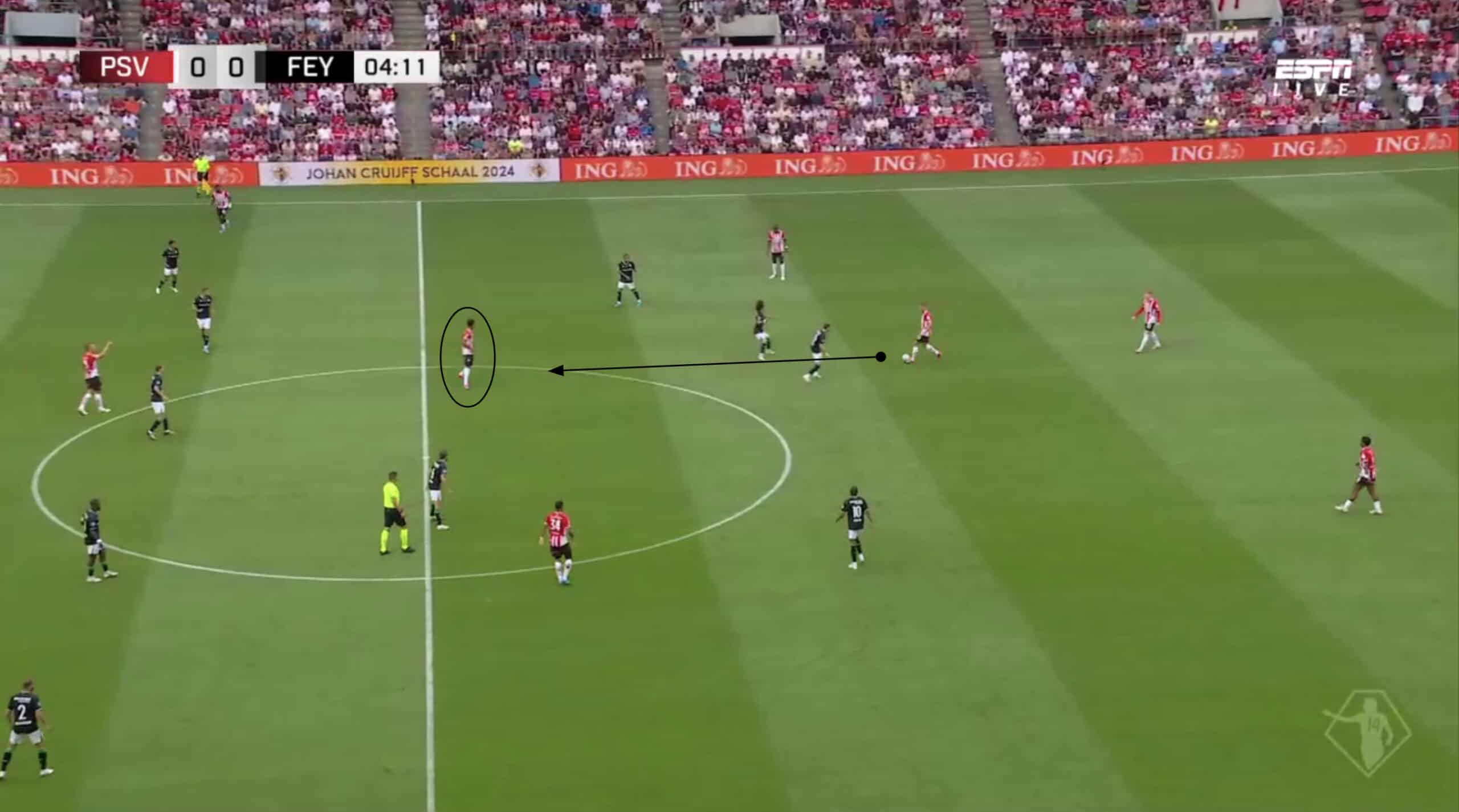
First, let’s look at his off-the-ball movement when playing as a #8.
In the above example from the Super Cup against Feyenoord, Tillman can be seen dropping in between the Feyenoord lines and finding space to receive the ball in an area where he can control and turn directly towards their goal on the attack.
Feyenoord’s coverage is poor, with no one picking up the space in behind the midfielders who push up to win the ball off Jerdy Schouten, which Tillman fully exploits with his movement into that zone.
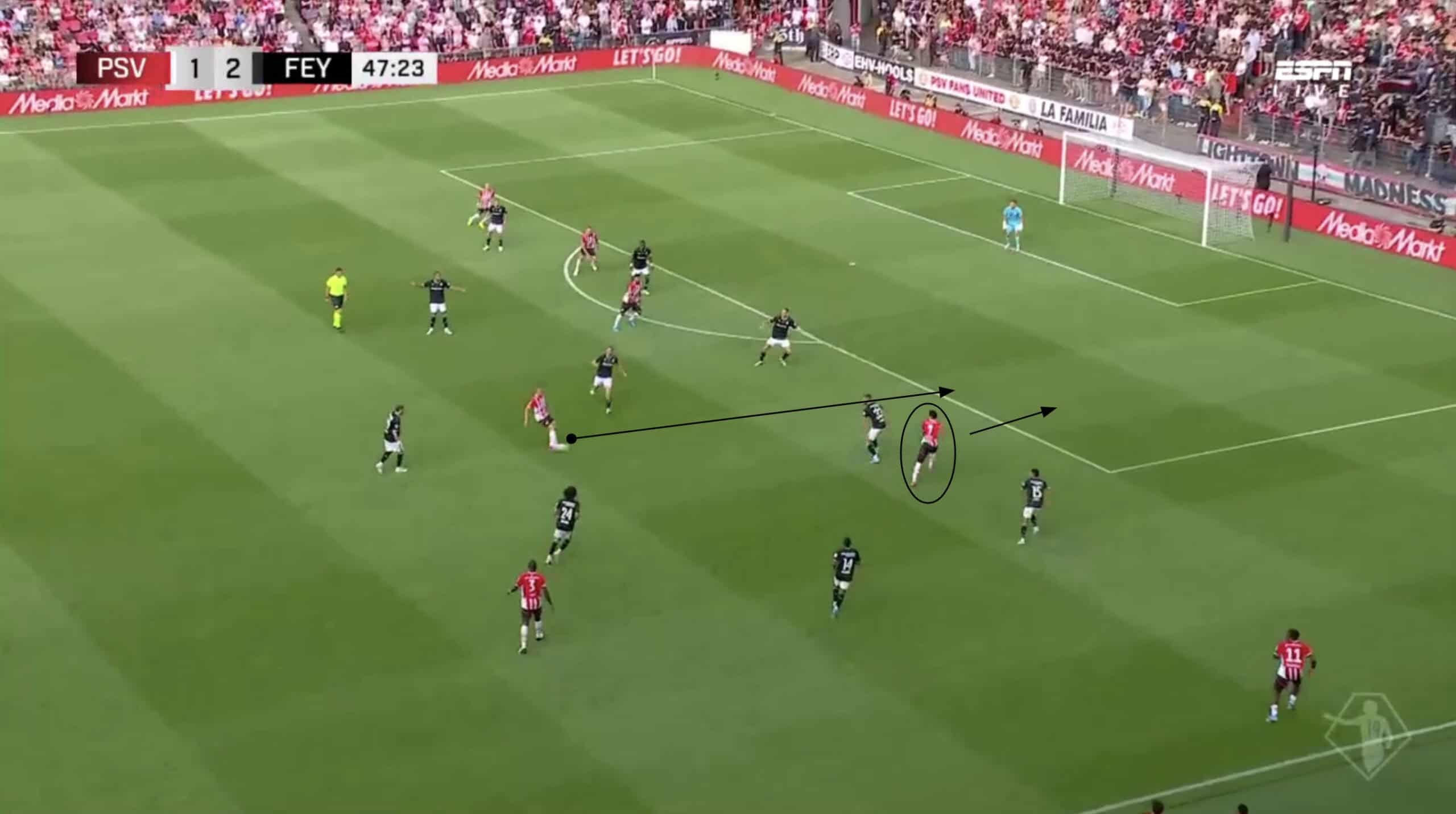
Another example of his smart movement off the ball in a more advanced position can be found.
He spots a gap in behind the Feyenoord defence on the blind side of the left-back and times his run into the box to perfection to get on the end of Joey Veerman‘s eventual pass.
This then leads to an easy cut-back for de Jong, who tucks it away for the equaliser.
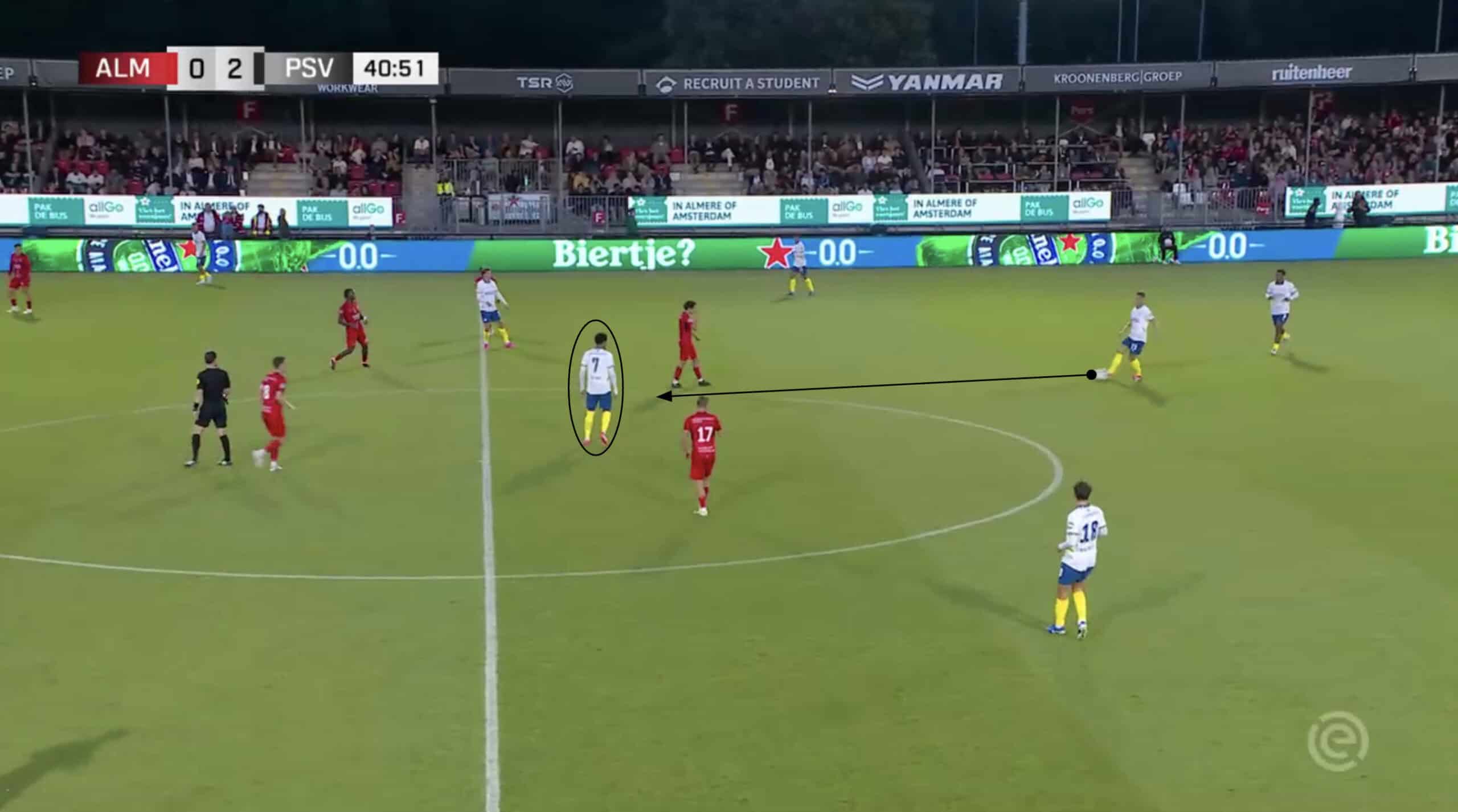
Here is another example of him finding pockets of space from the game against Almere City, albeit this time in a more congested area.
As Almere invite PSV to come at them by standing off rather than trying to press to win the ball, there isn’t as much room for the advanced players to receive the ball and turn towards goal.
Tillman is still able to find spaces to receive and get touches on the ball to keep himself active in the game, although on this occasion, he’s forced to pass backwards because of the defenders coming from behind.
Still, it is another excellent example of his movement and what his game is about.
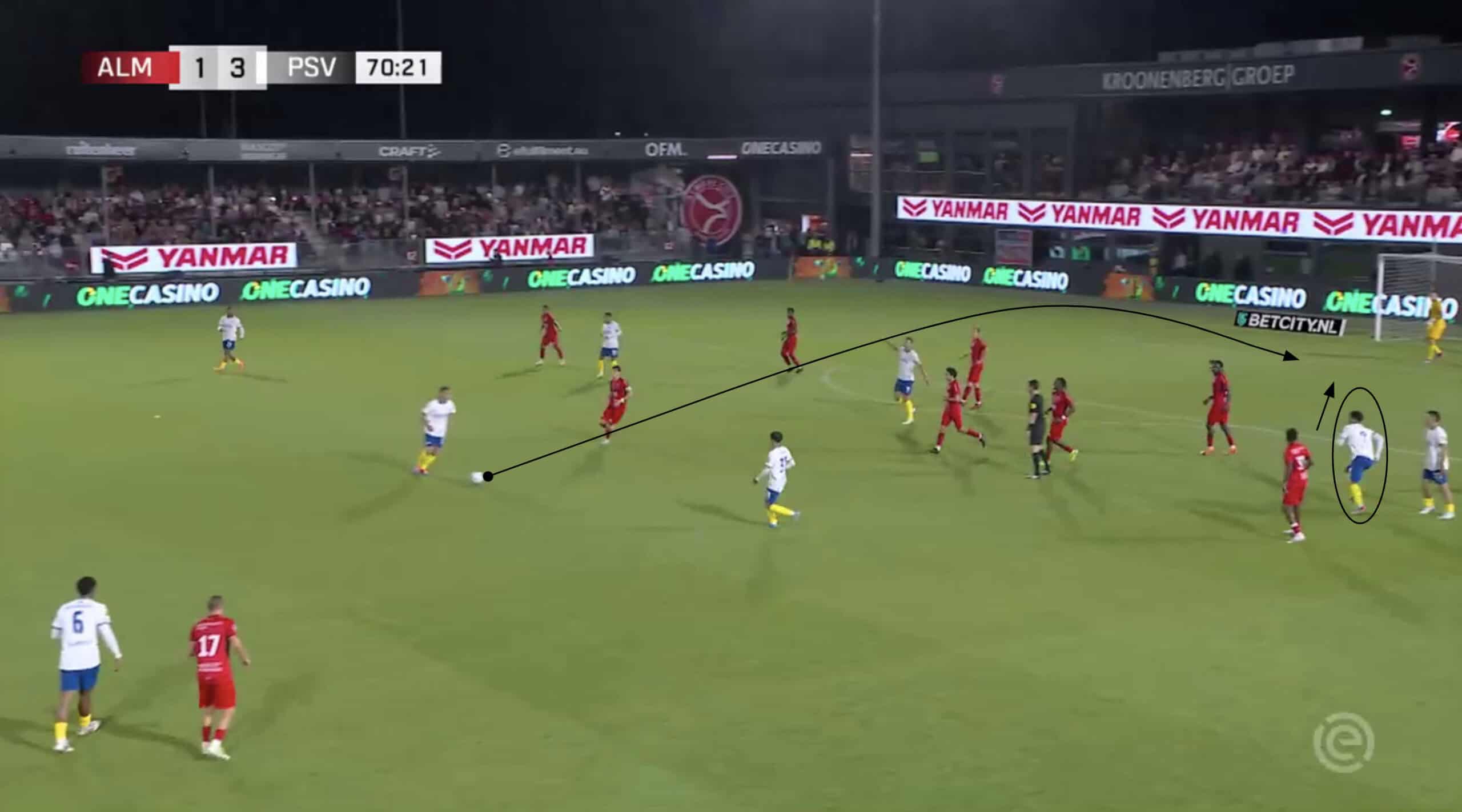
From the same game, we can see an example that directly led to a goal for the American.
As Veerman receives the ball short, Tillman is already scanning and looking for spaces where he can threaten the opposition, as he does in this play.
He notices the Almere defenders’ lack of attentiveness to their surroundings and makes the run in behind the defence before receiving the ball over the top and taking his chance to net his second goal of the season.
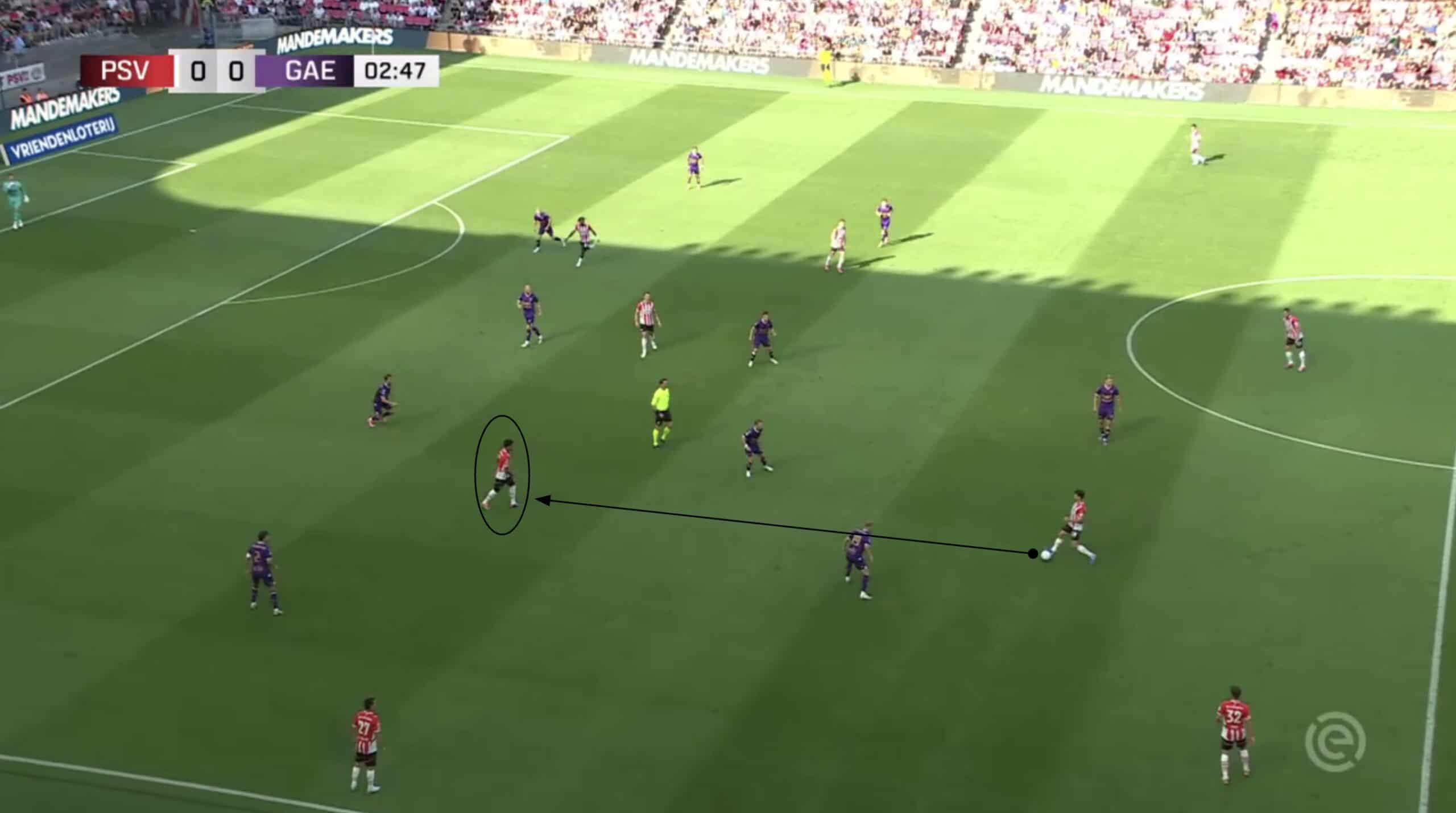
Again, an example from the home win over Go Ahead Eagles, where Olivier Boscagli carries the ball into the opposition half from deep and spots Tillman, who finds room in between the lines to receive the ball with time and space to manoeuvre the attack as he wants.
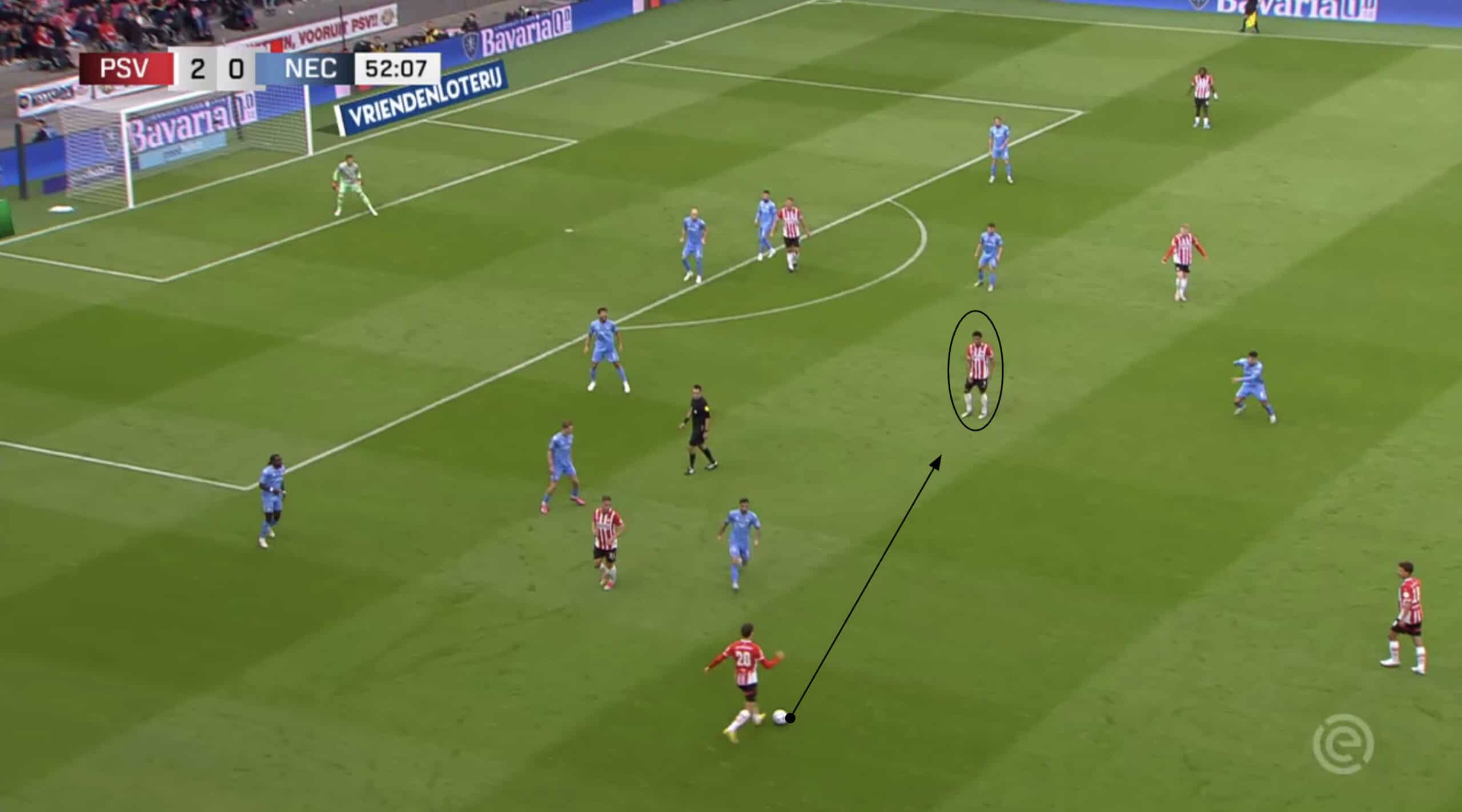
The illustration above is from the last league outing at home to NEC Nijmegen, where again Tillman is found in space with no one near him and available to receive a short pass some 25 yards from goal.
As we’ve seen from the examples from several games, it’s his movement that creates the most danger for the opposition.
He’s very adept at finding pockets where he is free of markers and can receive the ball in space.
This makes him a key protagonist to PSV’s attack and is why he found so much success last season and so far early on this term, too.
Now, let’s look at a couple of examples from the other side of his game: his defensive contributions.
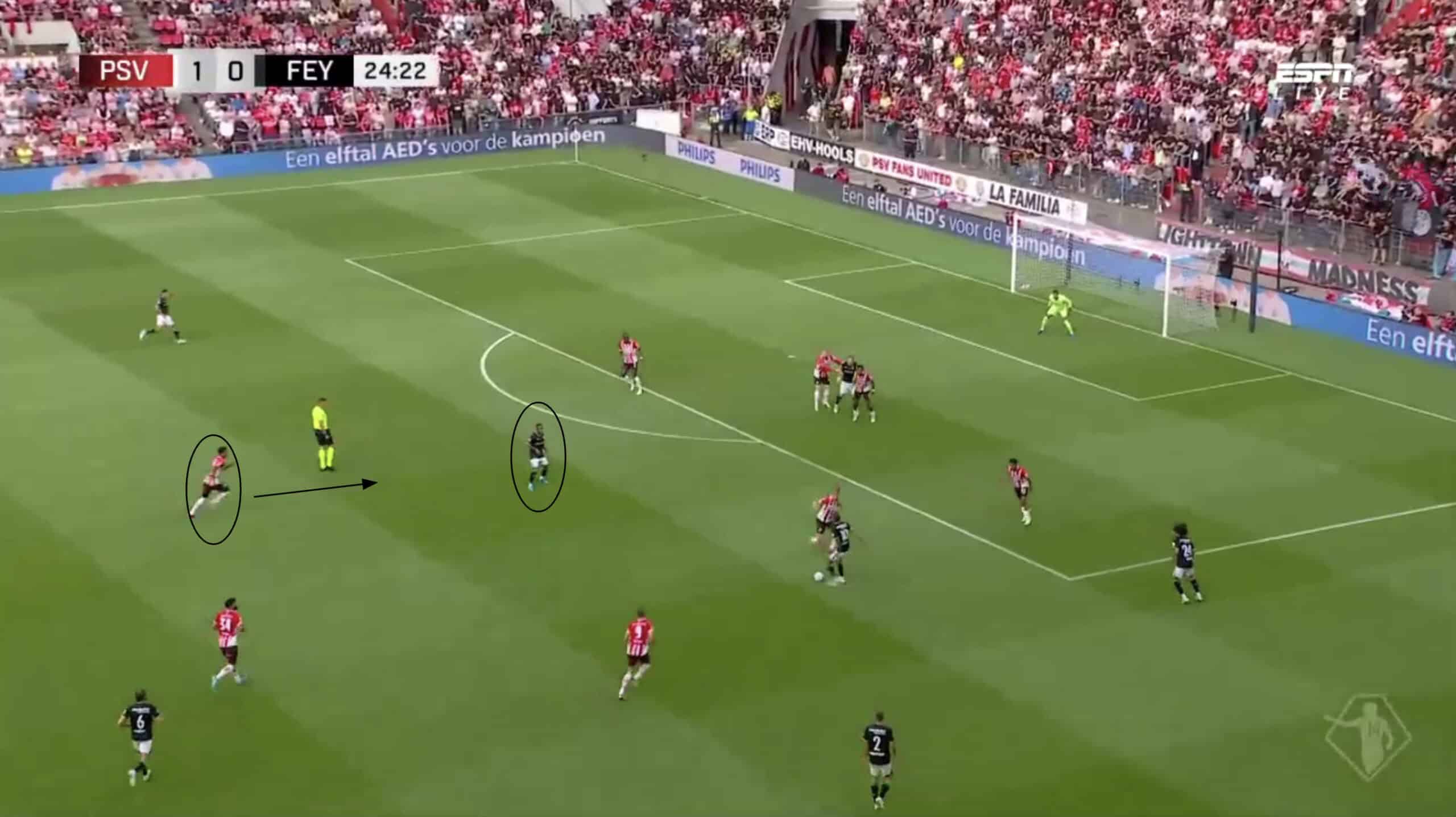
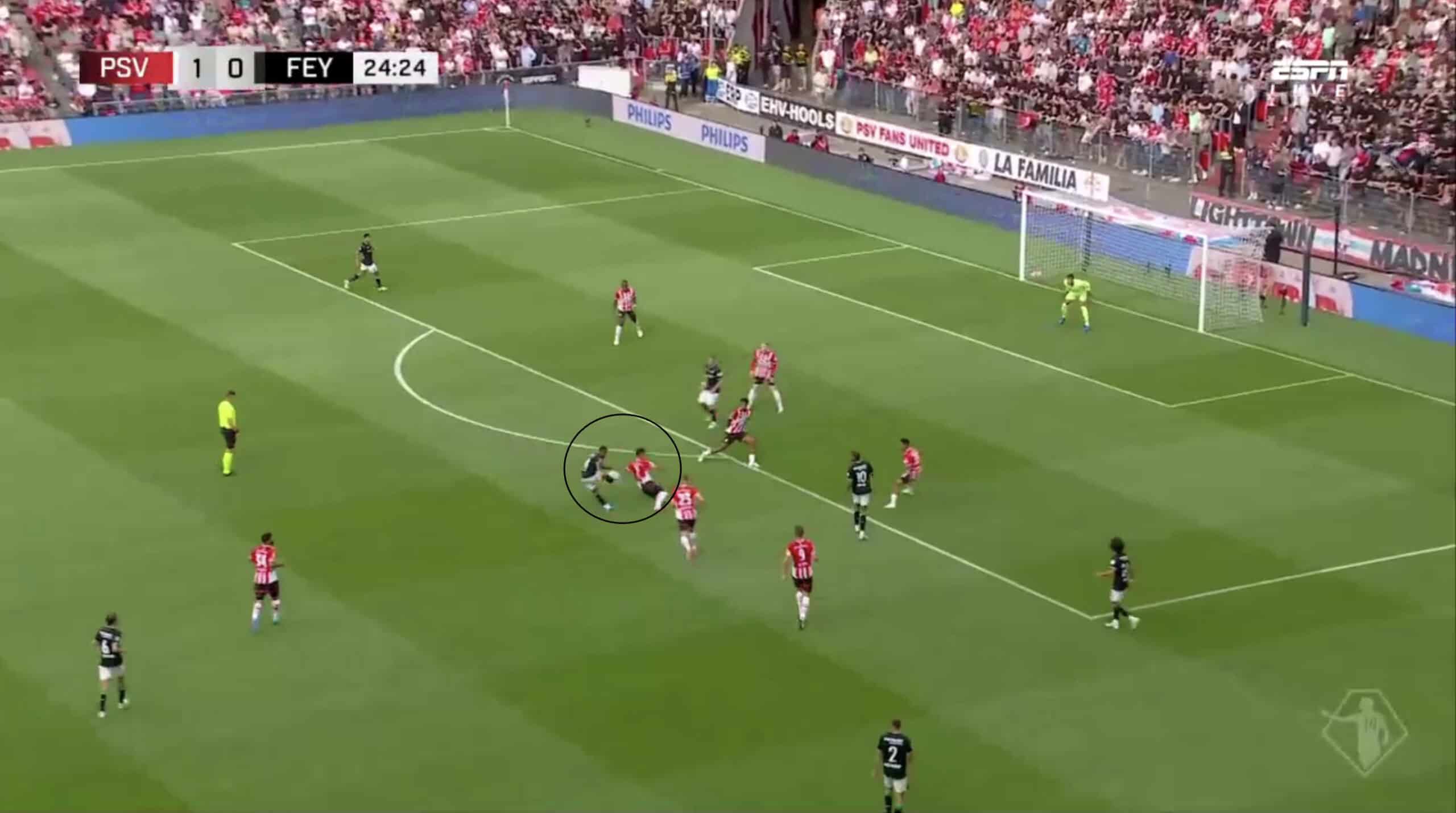
Above, we can see a play from the Johan Cruijff Schaal where you can see him spot the imminent danger posed to his team’s goal with a Feyenoord player wide open in space just outside the box, ready to receive and strike the ball at their net.
He’s then able to sprint across and get in the way of the shot coming from the attacker’s blind side to block it and kill the attack.
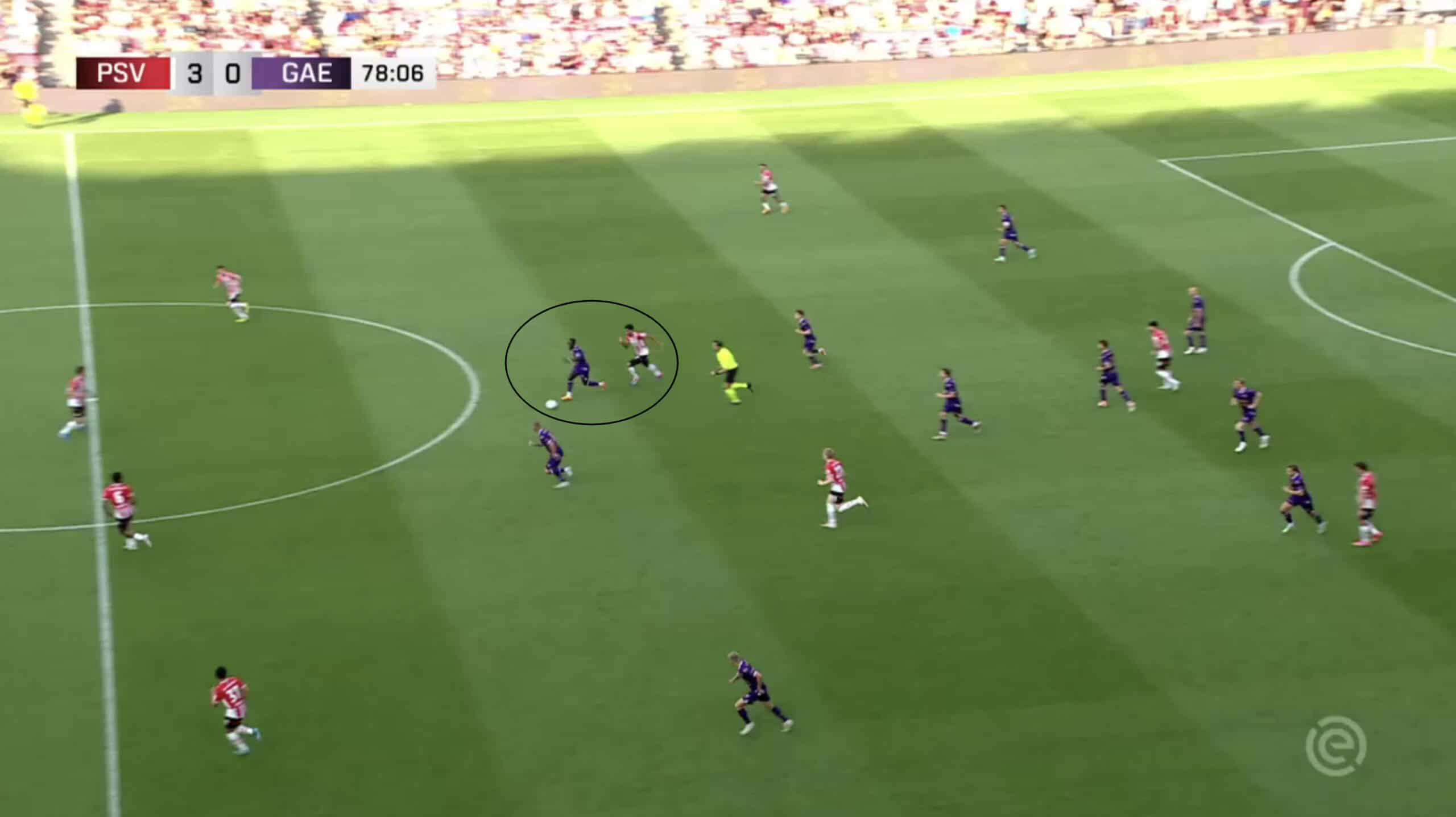
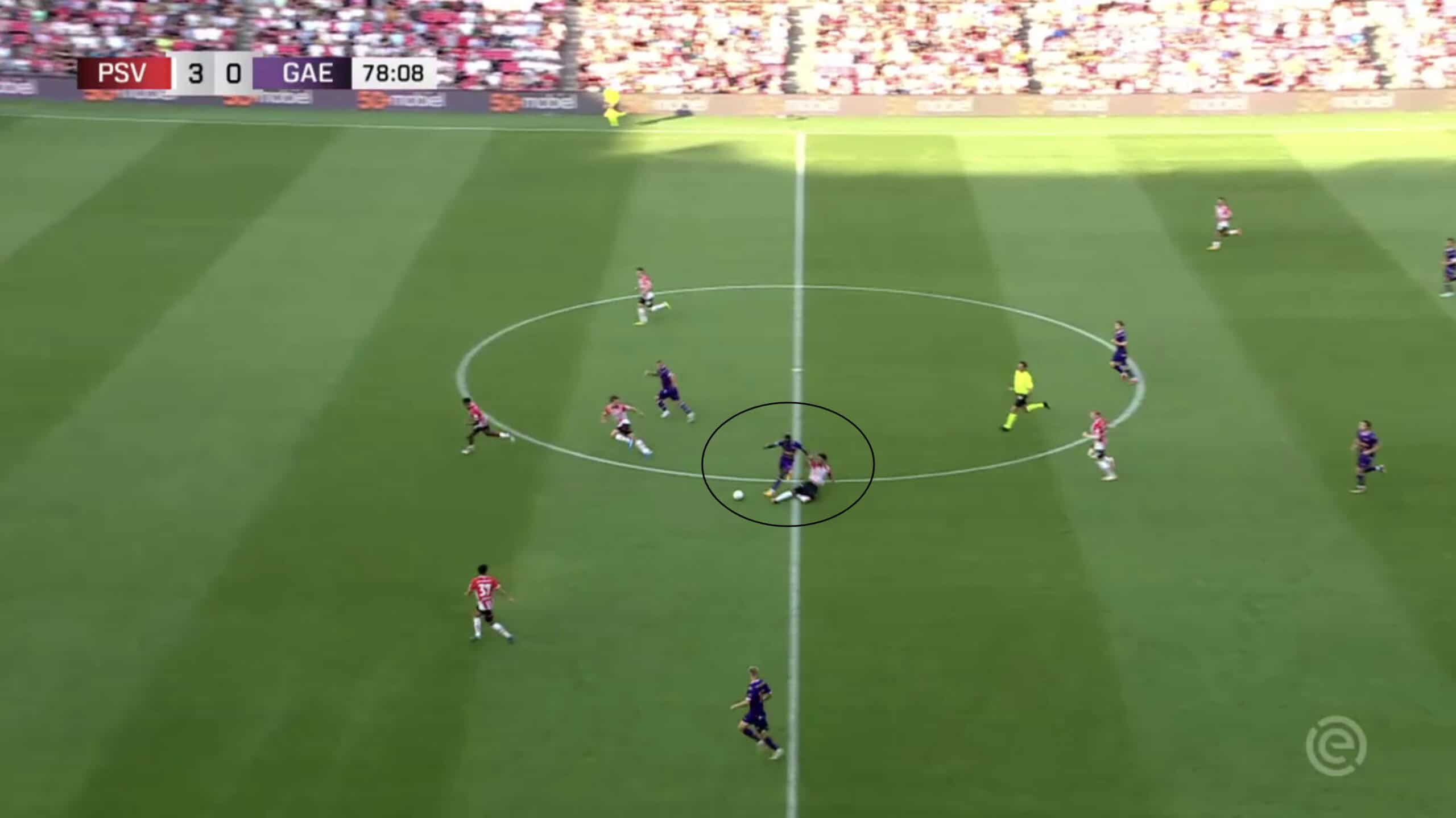
Another similar example above from the Go-Ahead Eagles is where after his side lose possession, you can see him running back defensively to recover the ball with a well-timed challenge in the centre of the pitch.
Especially impressive in a situation where his team is 3-0 up and coasting with just over ten minutes left and a testament to his desire to put in the work when his team needs on the other side of his talents.
Malik Tilman Heat Map
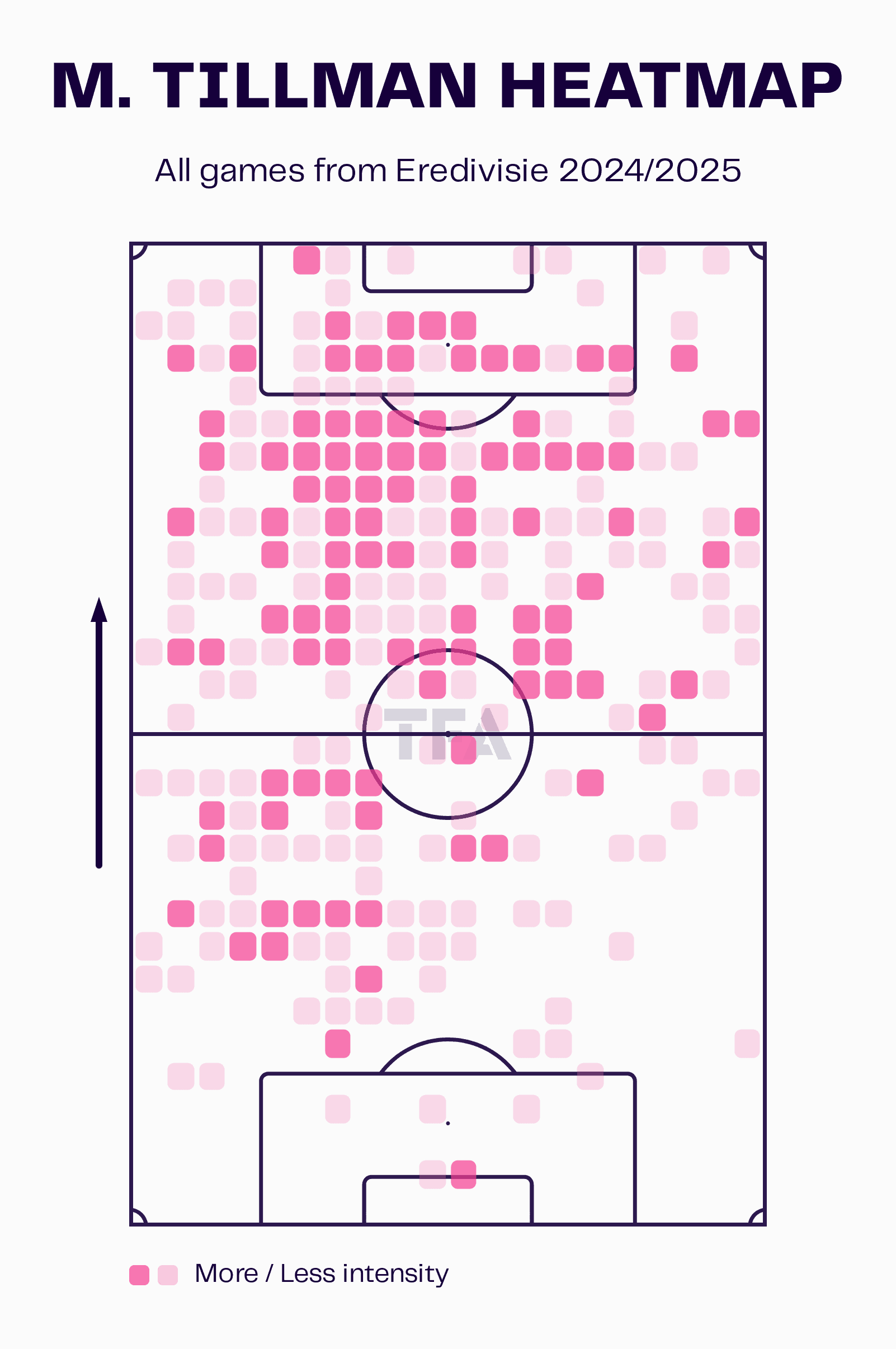
The heatmap in the data viz above paints a picture of Tillman’s impressive movement, as alluded to earlier.
As you can see, Tillman isn’t just a static midfielder who waits for the ball to arrive in order to impact the game, instead he goes to wherever the game is being played and tries to become part of the action.
He sees the game well and knows how to position himself on the field to where attacks can run through him, which is why he’s won Bosz’s trust to be one of his mainstays in the centre of midfield.
Malik Tilman Touch Map
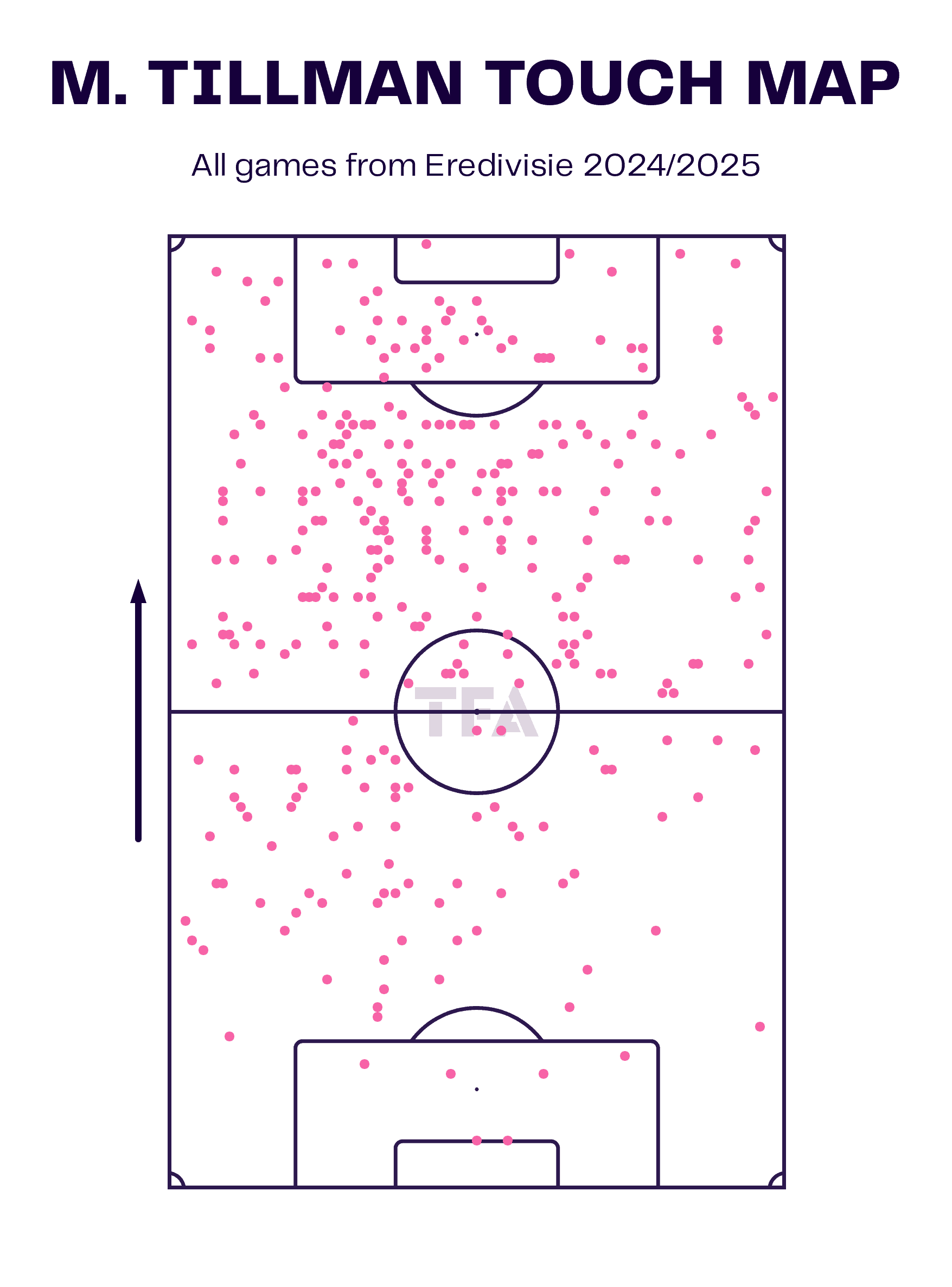
As with the heatmap, this data visualization of Malik Tilman’s touch map highlights how well he covers almost every blade of grass in an attacking sense and can be found anywhere trying to receive the ball on the pitch.
Tillman is a very important player for this PSV Eindhoven team, and we’ve examined a couple of crucial reasons for this.
Now, let’s look at the other summer signing, which has also become an instant hit.
Ryan Flamingo Scouting Report – 21 Years Old, CB/DM
Flamingo arrived this summer from relegated Serie A side Sassuolo for €9m and has instantly become a key player at the Philips Stadion.
Despite being originally a defensive midfielder by trade, Flamingo received opportunities in the centre-back position over the last couple of seasons on loan at other Dutch clubs, namely Vitesse and Utrecht, respectively.
His performances clearly caught the eye of Bosz, who decided to bring him in this summer and throw him into the starting XI from the first game.
So far, he hasn’t been given a reason to question that decision, with Flamingo becoming a key contributor almost immediately.
So why has Flamingo become so crucial to this side so quickly?
Let’s take a closer look below.
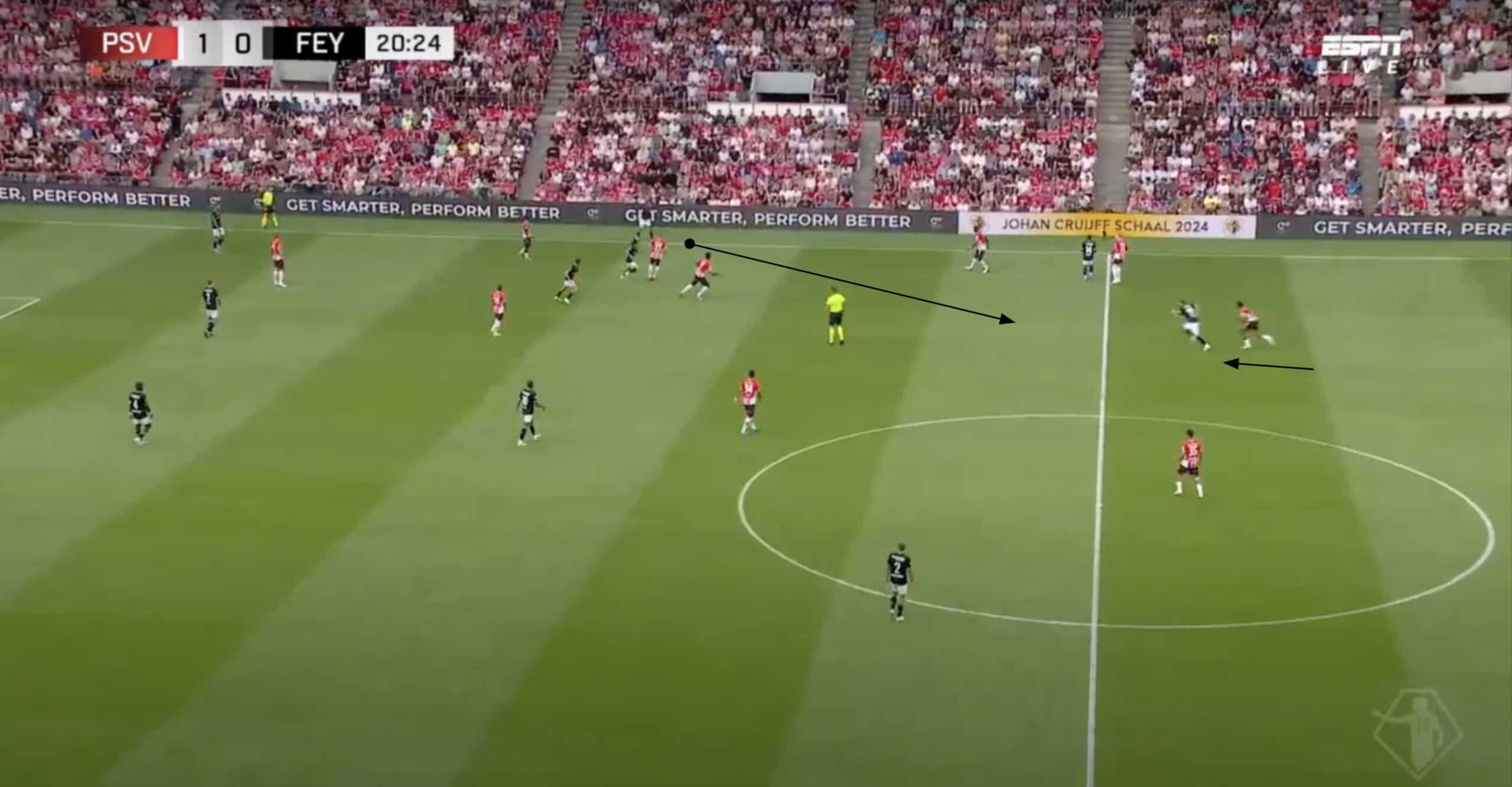
In the graphic above from his competitive debut against Feyenoord, we can see Flamingo pushing up out of his defensive position to cut down the Feyenoord forward’s attempt to receive the ball from a throw-in.
He does well to spot the danger early enough to kill the play before it gets anywhere, which he’s able to do thanks to his excellent speed.
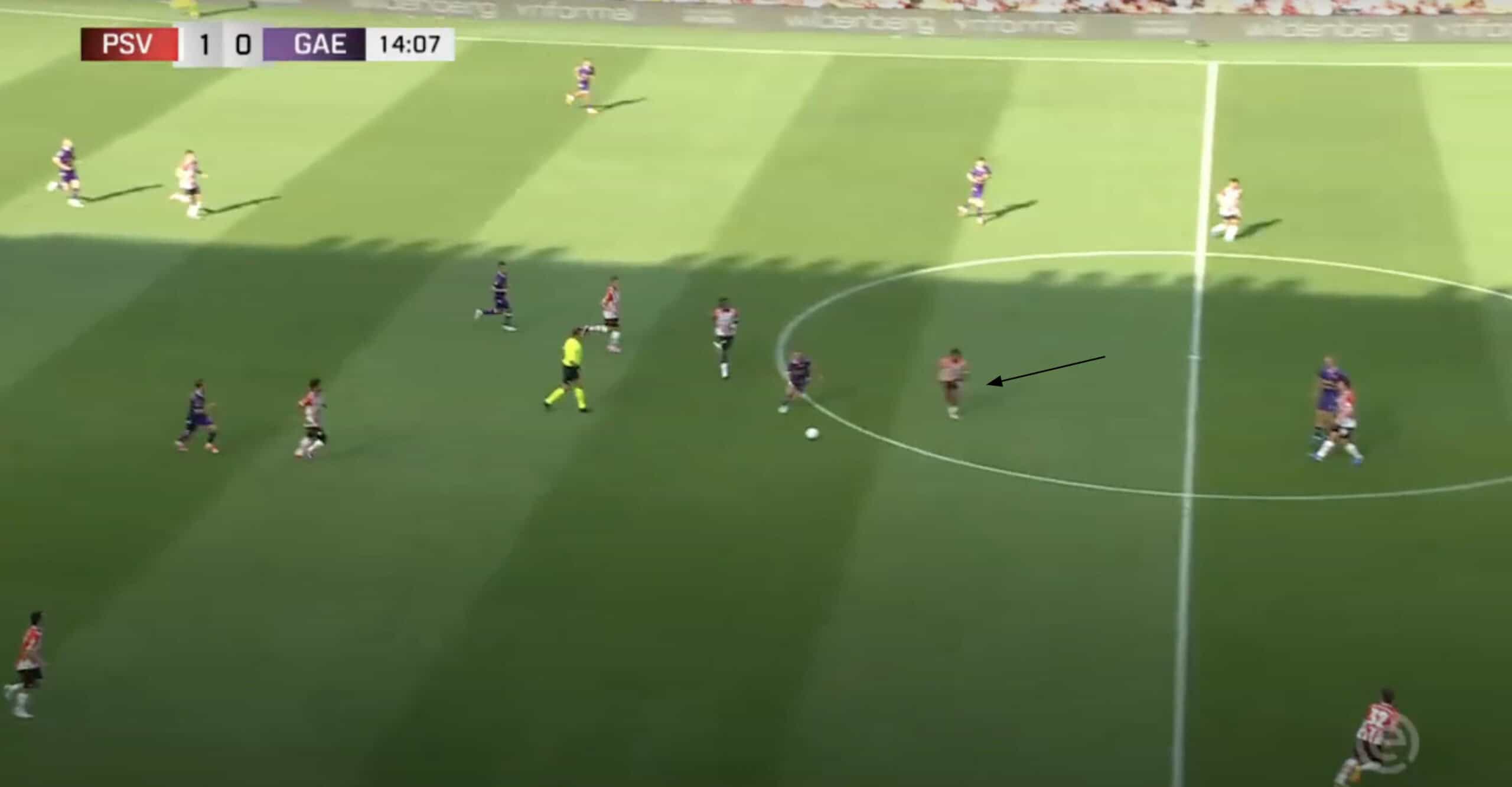
Another example of that can be found here from the Go-Ahead Eagles game.
As you can see, the rest of the PSV defence is dropping deeper while Flamingo pushes up to try and win the ball in transition, which he does with his reading of the situation spot on again and his defensive attributes coming to the fore once more.
By now, it should already be clear that Flamingo’s importance to this side is his ability to use his pace and good reading of dangerous situations before they happen.
This allows PSV to defend and push higher up the field, as noted by his bursts out of his defensive position in the examples we’ve seen.
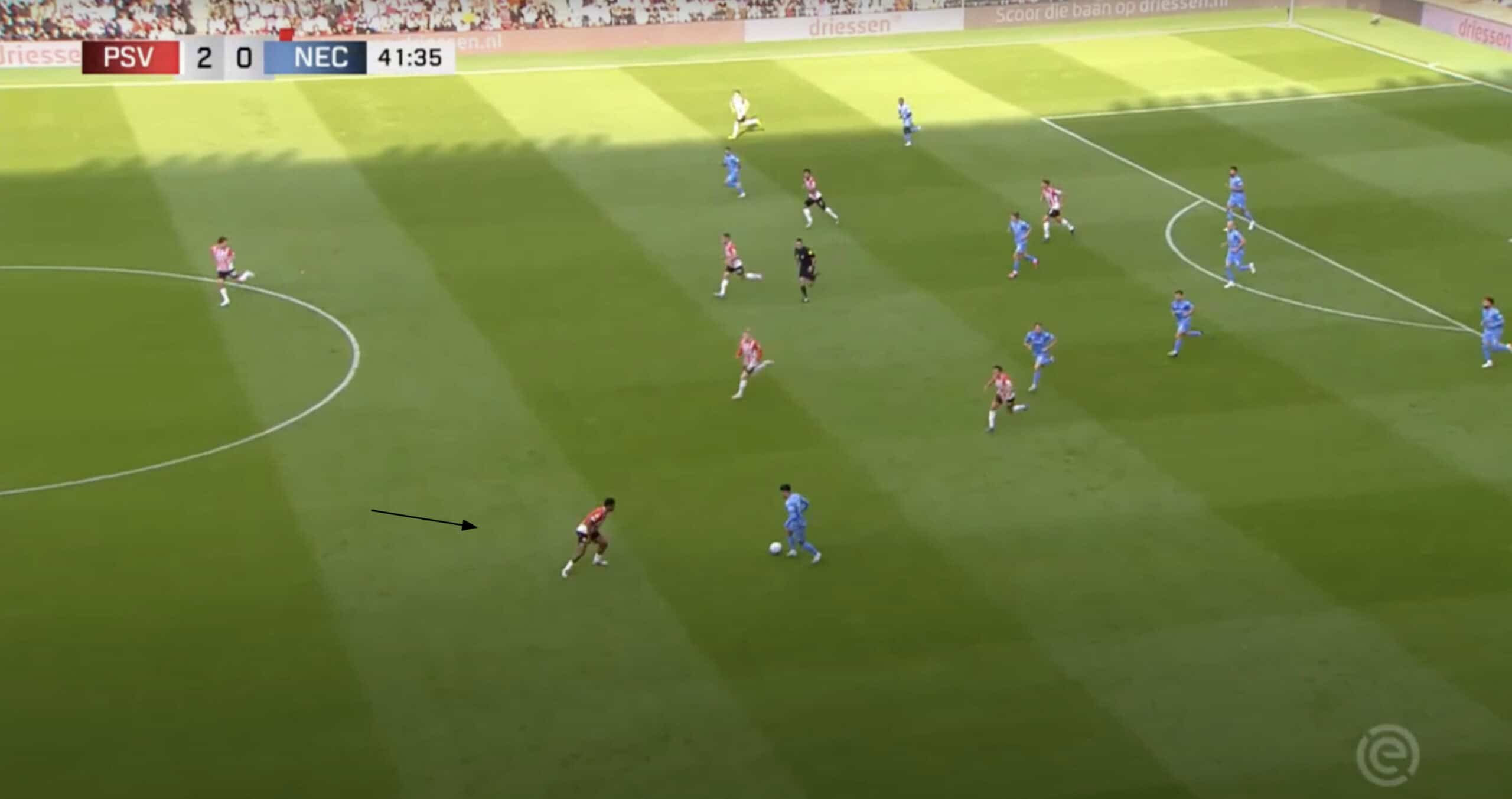
Here is another example from the last game against Nijmegen, where Flamingo takes up more of a defensive midfielder position and tries to win the ball off the attacker early on in their counter-attacking attempt.
While he is also blessed with a great place to be a solid covering defender, it’s his desire to take risks and be aggressive with defending that makes him a tremendous asset to this team.
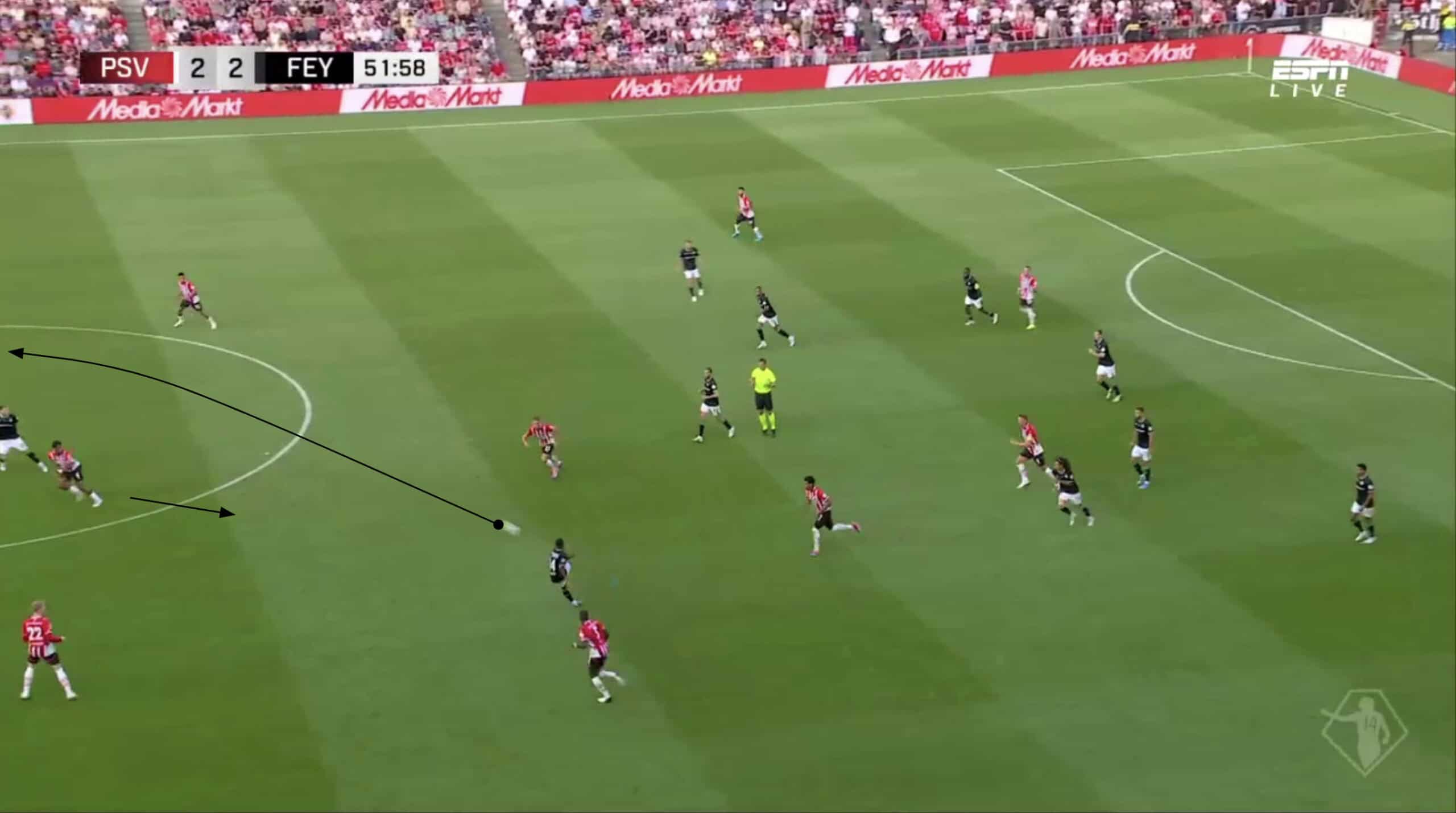
With such risks can come great rewards, but there can also be cracks waiting to be exploited.
Above is an example from his debut where Flamingo, for once, gets caught out trying to push up too high, allowing Feyenoord to play a ball in behind him, which directly leads to their third goal in this game.
Still, the event did nothing to faze Flamingo from playing the way he does.
Despite the early creaks in his PSV career, he’s hardly put a foot wrong since becoming a vital cog to this team’s tactical set-up.
Ryan Flamingo’s style of play embodies the football Bosz likes his teams to play: always on the front foot, brave, and taking risks when necessary.
Flamingo is the ideal centre-back for a team that plays this way, and he’s taken every opportunity so far to showcase his abilities while improving his new team.
Ryan Flamingo Defensive Territory Map
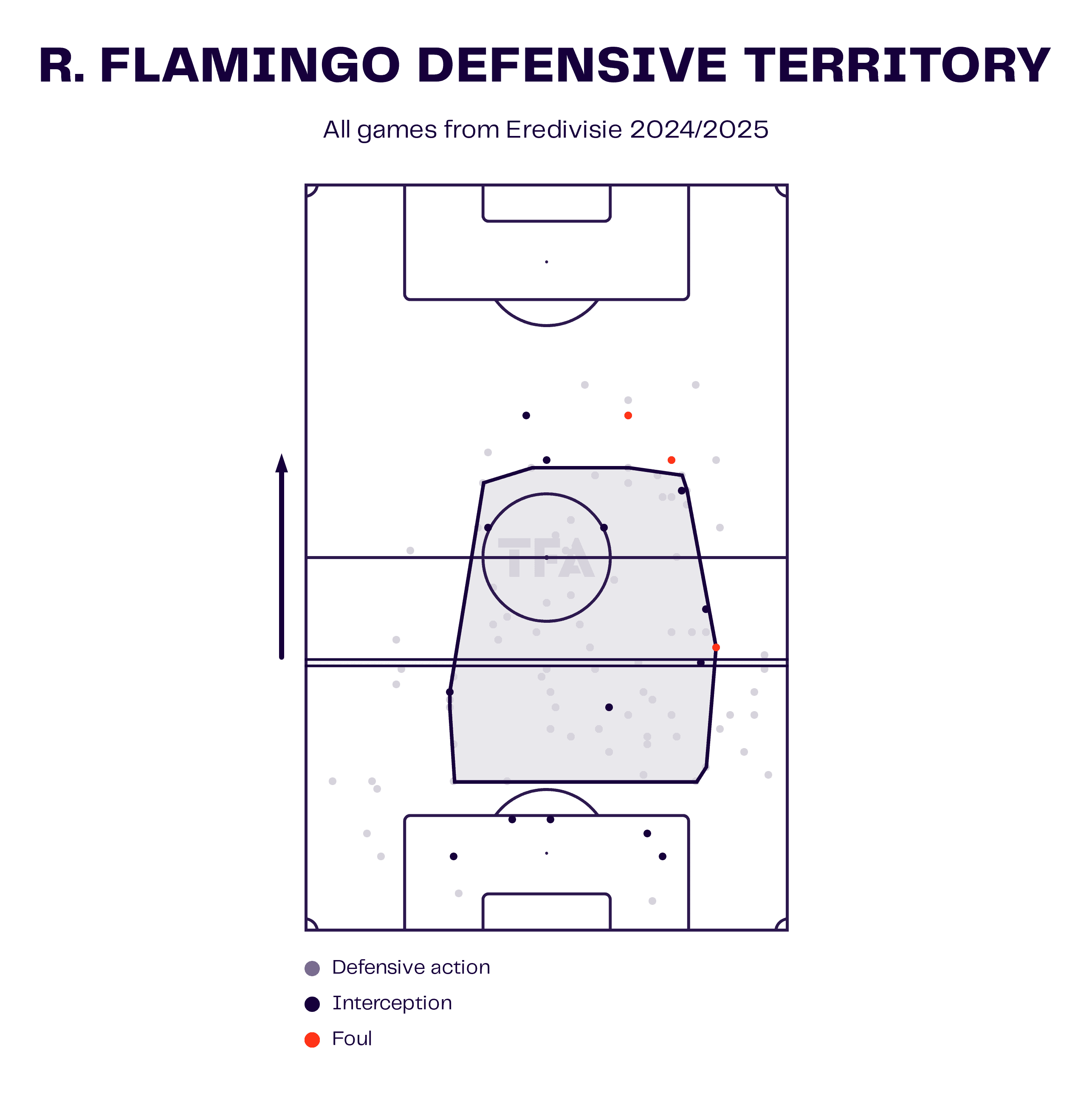
To further emphasize the point on Flamingo’s desire to push up and defend on the front foot, the data viz above that captures his average defensive territory in the league games this term.
It doesn’t look like what one would normally expect of a center-back, but that is what Ryan Flamingo is about.
He read the game well, put out fires early, and kept the ball in his team’s grasp with an aggressive approach to defending and tidy passing when in possession.
Ryan Flamingo High Regains Map
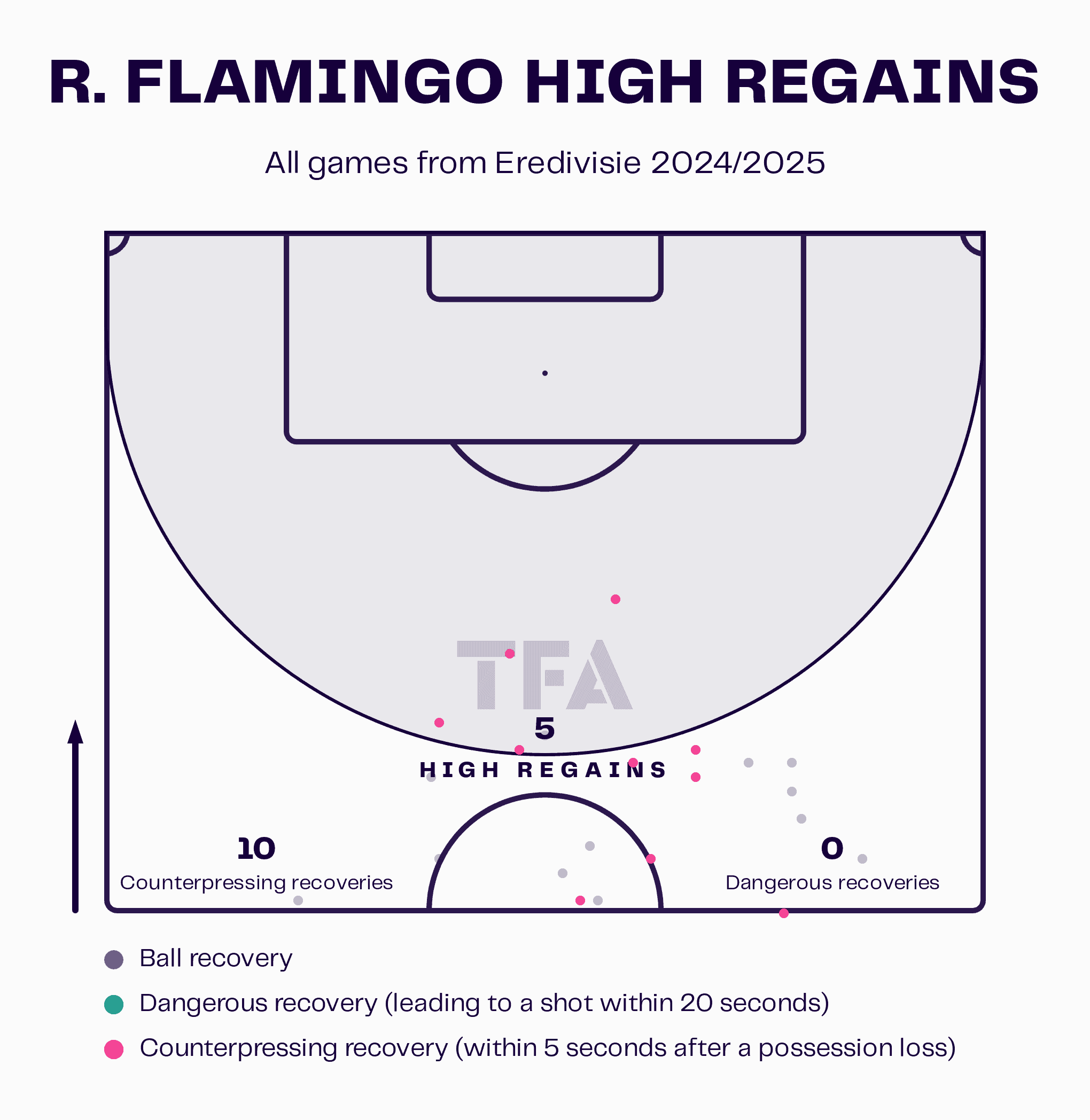
The data viz above also further highlights the success of his defending higher up the pitch.
Flamingo recorded 15 recoveries already just five rounds in, five of which came in the attacking third, which, again, you don’t normally associate with centre-backs.
A unique player with attributes that add a lot to this PSV defence and team overall, Flamingo’s PSV career has gotten off to a great start, and there’s a lot more to come from this talented young defender.
Conclusion
As this player analysis has shown, PSV’s ranks were bolstered with a couple of flying young stars this past summer.
Both Tillman and especially Flamingo integrated quite well and quickly into this successful team in a matter of weeks and have become mainstays in their starting eleven, which one would expect they will continue to be.
If they can continue on this note both individually and lead PSV to further success both domestically and in Europe, it won’t be too long before the big boys from Europe’s elite come calling.
It will be fascinating to follow their progress as the season progresses.






Comments